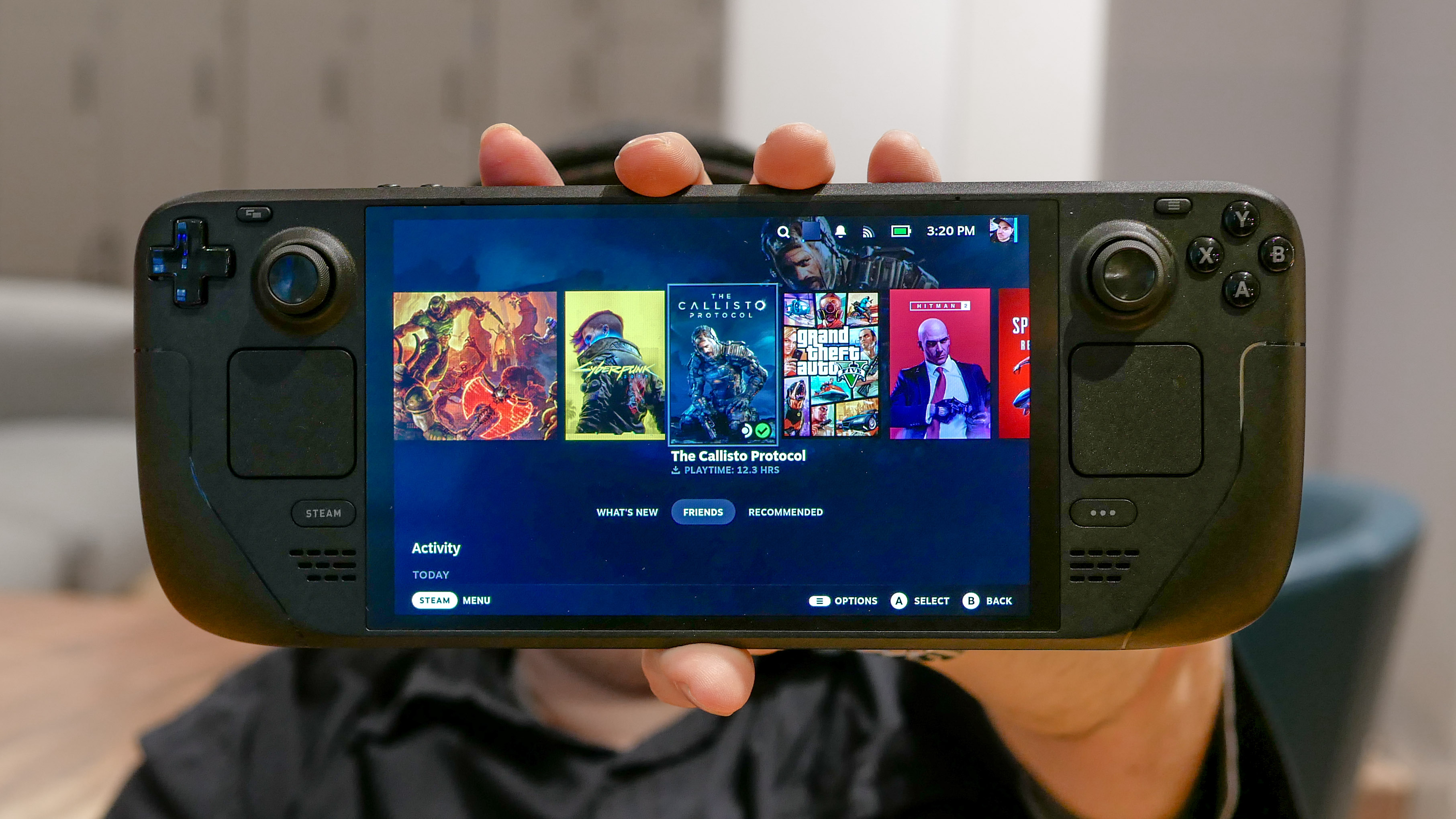3 upgrades I want to see from gaming handhelds in 2025
Gaming handhelds are great, but they could be better

Since the Steam Deck’s release, we’ve seen a slew of similar gaming handhelds hit the market. Windows 11 devices like the Asus ROG Ally X and Lenovo Legion Go rank among the best handheld gaming consoles thanks to their comfortable form factor, solid performance and decent battery life. Given their ease of use and relative affordability, these handhelds give even the best gaming laptops a run for their money.
With the popularity of gaming handhelds, I don’t expect the market to slow down. In fact, I think we’ll see even more devices in 2025. As a lifelong gamer and proud Steam Deck and ROG Ally X user, I’m excited for the future of handhelds. However, there are some aspects that I’d like to see fixed. With some improvements, it’s possible that manufacturers like Lenovo or Asus could dethrone the Steam Deck.
Gaming handhelds are awesome, but they could be better. Below, I’ll detail features I’d like to see from handhelds in 2025.
Smaller designs

Handhelds like the Steam Deck and ROG Ally are relatively small machines you can easily slip into your backpack. These and similar handhelds are also light enough to comfortably hold for extended gaming sessions. But while handhelds are portable, I’d like to see smaller models that could fit into a jean’s pockets.
And that desire isn’t unreasonable. Do you remember the PlayStation Portable and the PlayStation Vita? Both of Sony’s handhelds were just small enough to tuck into your pants pocket. Despite their diminutive size, their respective buttons and displays were large enough for comfortable gaming sessions. If companies want inspiration for creating a smaller handheld, those examples already exist.
Granted, smaller handhelds mean smaller displays. That might not sound appealing if you’re used to the 7- or 8-inch screens on modern handhelds, but people got along fine with the PS Vita’s 5-inch display. And again, I think these should be options, not the standard—especially if you won’t compromise on display size. But I wouldn’t mind sacrificing some screen real estate to get a more portable handheld.
Longer battery life

Almost all of the handhelds we tested in our lab lasted around 1 hour and 45 minutes on the PCMark 10 gaming battery test. This includes the Steam Deck, ROG Ally and Lenovo Legion Go. The sole exception has been the Asus ROG Ally X, which lasted for a respectable 3 hours. Though handheld battery life is generally on a par with gaming laptop battery life (which is admittedly not great), I’d like to see a handheld that can last substantially longer.
Now this won’t be easy, especially since the top-tier handhelds run on Windows 11—which we’ve proven is a battery hog. It’d be great if Microsoft released a version of Windows designed for handhelds that removed things like Copilot or stopped updates from installing to free up system resources. This would not only free up resources for gaming but also extend battery life. Games that are optimized for handheld hardware could also help in this regard.
I don’t think we’ll see any meaningful changes to Windows 11 on handhelds next year, but I can hope. With more handhelds on the horizon, it would be great if they had an operating system comparable to SteamOS. That would not only deliver a more intuitive gaming experience but also better battery endurance.
Better game optimization

The Steam Deck is underpowered compared to its competitors. But even though it has a lower power draw and runs on an older AMD mobile processor, it either matches or exceeds other handhelds in performance. Why? Because there are “Steam Verified” games that have been optimized for the system. Right now, there is no such thing for competing handhelds.
Optimizing games for different machines from different manufacturers might sound impossible. However, game developers already do this when making games that have to run on various PC configurations. Since handhelds like the ROG Ally and Legion Go run on an AMD Ryzen Z1 Extreme chip, I don’t think it’s unreasonable to ask developers to keep that processor in mind when developing games. This also extends to upcoming new or updated mobile processors for future handhelds, either from AMD or Intel.
Of course, there are other factors to consider, such as optimizing for Windows 11 or any potential unique features a handheld might have. Regardless, I want to see companies do whatever they can to help individual games run great for all handhelds. Simply having a game available on a device and praying to the gaming gods that it runs smoothly won’t cut it.
Outlook
2025 could be a banner year for gaming handhelds. Even if we don’t see the improvements I’ve detailed above, I hope any potential new machines offer substantive updates to what’s currently available.
With meaningful additions like different form factors, longer battery life and improved optimization, the future of handhelds could be even brighter. Let’s hope we see the best gaming handhelds yet in 2025.
More from Tom's Guide
- Steam Deck OLED vs Asus ROG Ally X: Which should you buy?
- I used the MSI Claw as my only gaming console for an entire week
- I swapped my $500 wireless Razer gaming setup for a $100 one
Sign up to get the BEST of Tom's Guide direct to your inbox.
Get instant access to breaking news, the hottest reviews, great deals and helpful tips.

Tony is a computing writer at Tom’s Guide covering laptops, tablets, Windows, and iOS. During his off-hours, Tony enjoys reading comic books, playing video games, reading speculative fiction novels, and spending too much time on X/Twitter. His non-nerdy pursuits involve attending Hard Rock/Heavy Metal concerts and going to NYC bars with friends and colleagues. His work has appeared in publications such as Laptop Mag, PC Mag, and various independent gaming sites.










